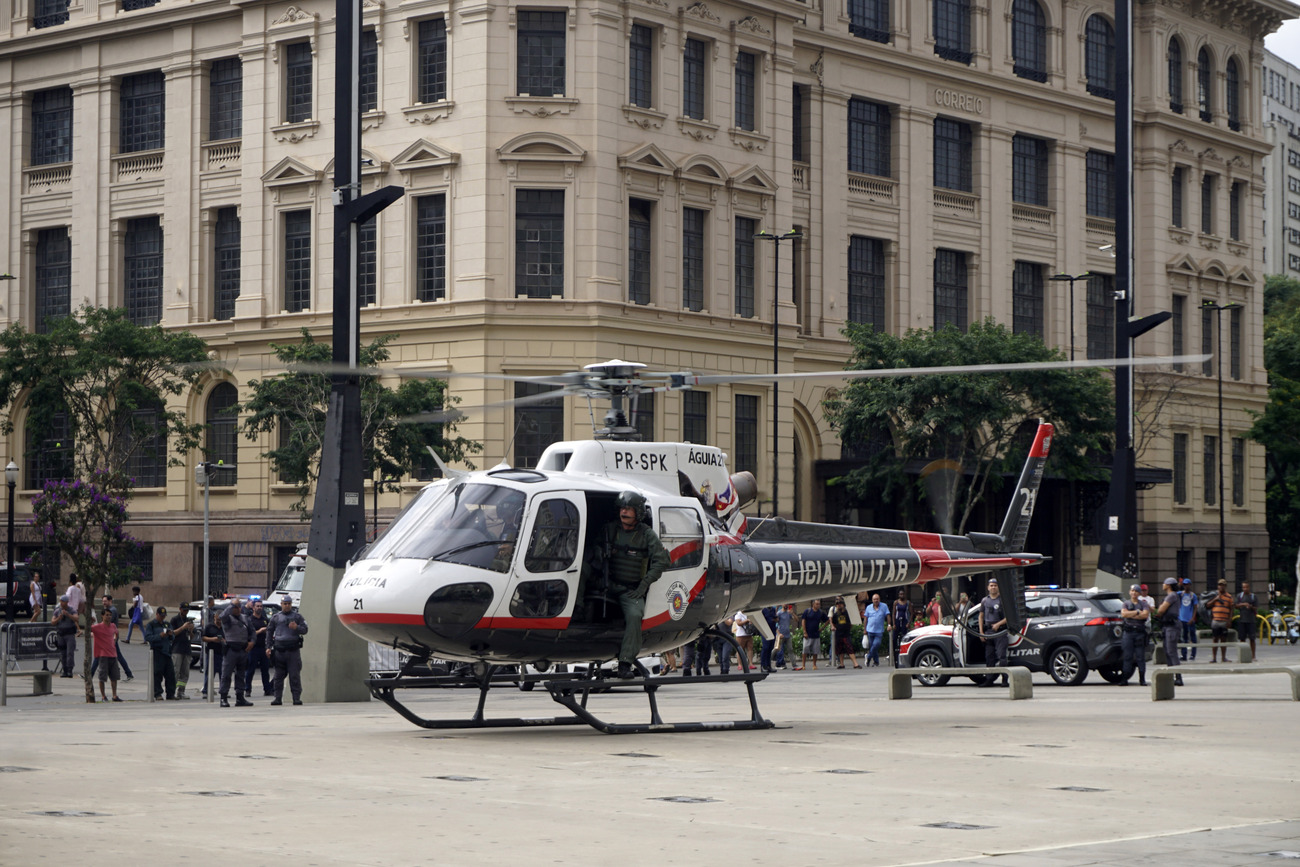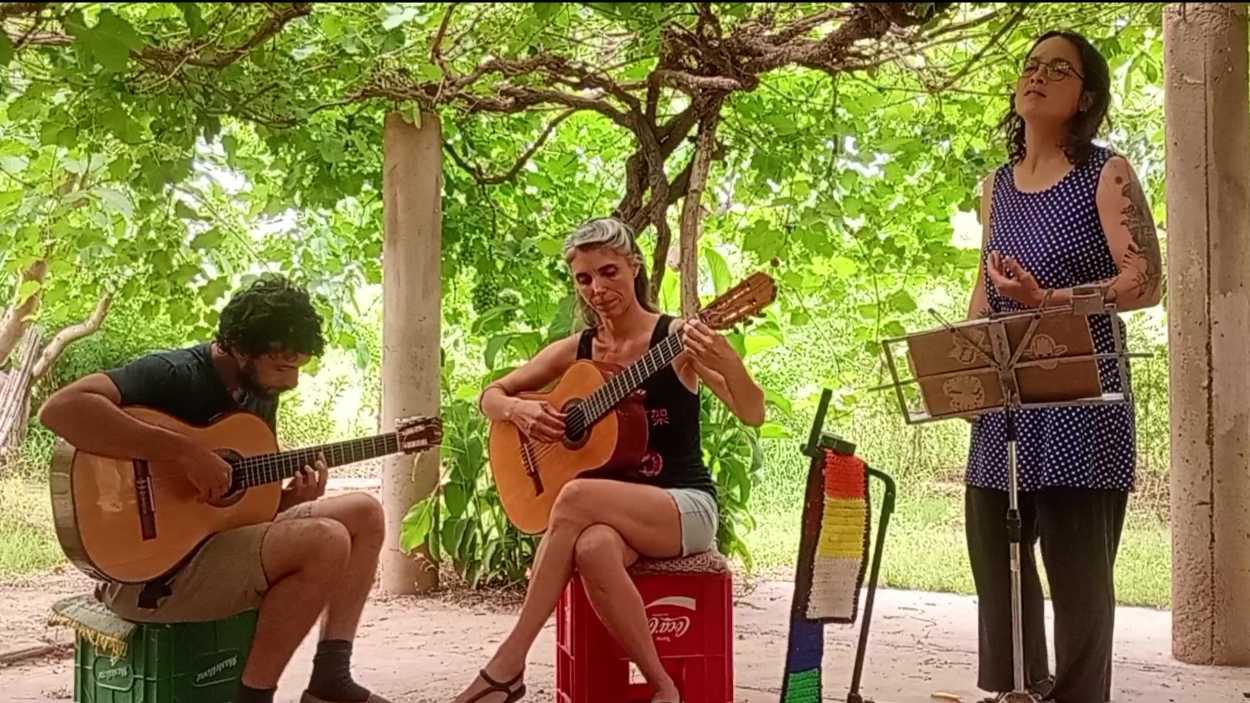Hélio Oiticica's Central Park Installation Realized 51 Years Later at Socrates Park
Hélio Oiticica's Central Park Installation Realized 51 Years Later at Socrates Park
The artwork "is as radical now as it was in ’70s…is free, has public access, and is inviting them to participate," said Aimé Iglesias Lukin to ARTnews.
When he arrived in New York in the early 1970s, the late Brazilian artist Hélio Oiticica dreamed of creating a large-scale outdoor public installation for the city. Situated outside a traditional arts institution, the work was meant to challenge what art could be by creating a space that would actively engage the public by inviting them to participate.
Oiticica, who died at 42 in 1980, was never able to realize this work, titled Subterranean Tropicália Projects (1971), the red-tape of New York City’s bureaucracy proving insurmountable for the acclaimed artist. He even created several scaled-down versions of the original multi-level structure in the hope that some way, somehow he might be able to accomplish the feat. […]
Now 51 years after its original conception the scaled-down circular iteration, PN15, will be at last realized at another New York City park, the Socrates Sculpture Park in Queens. The installation will be on view from May 14 to August 14, and visitors will be able to enter it on Fridays from 5–7:30 p.m. and Saturdays and Sundays from 11 a.m.–5 p.m.
Built to scale, the work marks the first major realization of an outdoor project by Oiticica in the U.S. The project is being realized in conjunction with the Americas Society on the Upper East Side and the Projeto Hélio Oiticica, the foundation established by the artist’s two brothers the year after his death. Lisson Gallery, which represents Oiticica’s estate, has also provided support. (Lisson opens a survey exhibition of Oiticica’s work, curated by Ann Gallagher, at its London space this week.)
“This is an artwork that is as radical now as it was in ’70s,” Aimé Iglesias Lukin, the director and chief curator of visual arts at the Americas Society, told ARTnews. “This an artwork that is free, has public access, and is inviting them to participate and is engaging with them. We don’t have enough of that.”
She added that the choice of Socrates in the New York of 2022 is the “perfect” choice. “If you tried to do that today in Central Park, it would be completely sterilized because Central Park is a different Central Park from the one Oiticica was referring to,” Iglesias Lukin said.
The idea to attempt to manifest PN15 came about through an exhibition at the Americas Society, which since it was founded by David Rockefeller in 1965 has acted as a connector for Latin American artists in New York, often by providing them with travel grants or exhibitions. A maquette for the original Subterranean Tropicália Projects, as well as sketches for two reconfigured versions, PN14 and PN15, were shown in Part I of the Americas Society’s “This Must Be the Place: Latin American Artists in New York, 1965–1975”; Part I closed in December, and Part II runs through May 21.
Iglesias Lukin said the exhibition offers a “re-reading of 1960s and ’70s American art through the lens of immigrants, in this case Latin American immigrants. We need to start questioning to which degree New York became the cosmopolitan center that it is without immigrants. How do you explain the neo avant-garde without all the artists who came from all over Europe, Latin America, and Asia?”
She sees Oiticica and the artists he was connected with as central to this rethinking, adding that “they arrived in New York at a moment when Latin American art, as a term, didn’t even exist and they totally invented it here.”
When she was in conversations with Oiticica’s estate to secure loans for the exhibition, Iglesias Lukin said she had “fantasized” about the possibility of trying to realize the project for years, but it was through her conversations with the estate that she realized they were just as passionate about finally realizing Oiticica’s large-scale installations. She approached Jess Wilcox, curator and director of exhibitions at Socrates, less than a year ago, and they got to work. […]
“There was a set of institutional conditions, with regards to Brazilian art and American art, that prevented an artist like Oiticica to develop to his full potential,” Iglesias Lukin said. […]








